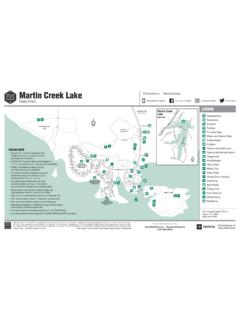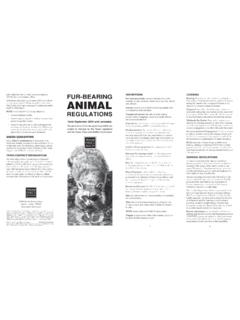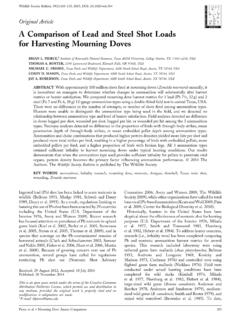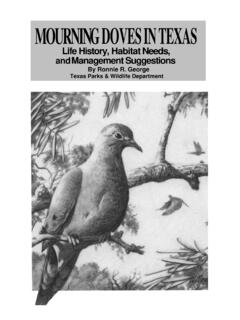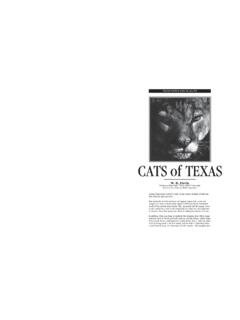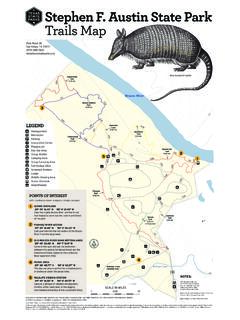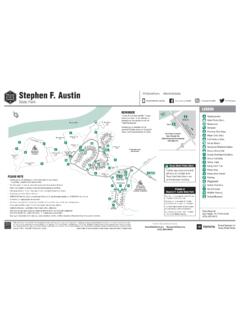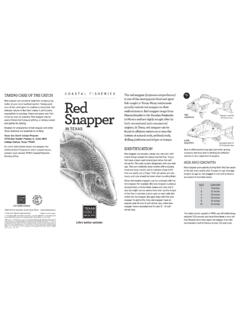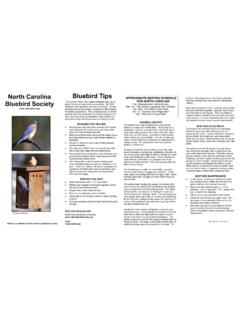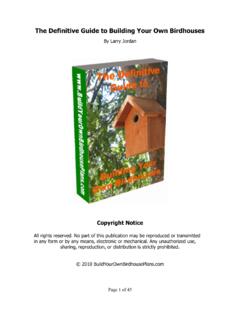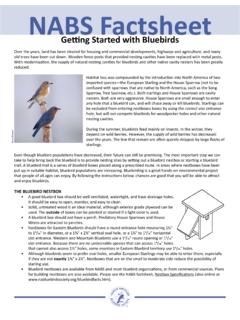Transcription of Woodpecker Damage: A Simple Solution to a Common …
1 Woodpecker Damage A Simple Solution to a Common Problem texas parks and wildlife Text: Clifford E. Shackelford, Texas Parks and Wildlife (TPW). Design: Debra Morgan, TPW. Printing: TPW Print Shop Woodpecker Damage: A Simple Solution to a Common Problem Introduction There have been 16 species of woodpeckers recorded in Texas, including the Ivory-billed that is probably extinct. The group includes woodpeckers, flickers, and sapsuckers. Several of these species occur in urban settings and have become a problem by making holes in man-made structures. The main culprits in Texas are Pileated and Red-bellied woodpeckers, and the Northern Flicker. Problems can arise in places you wouldn't normally expect them, like heavily wooded areas where these birds appear to have an adequate supply of trees and snags (standing dead trees).
2 These birds are simply searching for a place to call home and you can help provide them with such a place. Woodpeckers hammer or peck on wood or metal for three distinct reasons. The first has to do with foraging, and is the most commonly (yet incorrectly) used explanation for all the noise and damage created. The second reason for hammering is called drumming whereby the male announces his claim to a territory by tapping in rapid succession on resonating wood or metal. This is usually done before or during the breeding season, usually February through July, and serves a similar function as singing in songbirds. Drumming is loud, but it is typically short-lived and shouldn't be considered as an endless or destructive problem.
3 The third form of hammering is destructive and the word nuisance fits into the equation. It is called excavating (or chiseling) whereby either males or females construct a nest or roost hole with a chamber typically in trees. This is the most Common cause of damage. The cavity produced is an upside down L-shaped chamber with an entrance tunnel that angles down at 90 degrees to the chamber where the bird sleeps or rears its young. Unfortunately, some woodpeckers try to place such a cavity in the side of a house, barn, utility pole, fence post, or other man-made structure. Like most birds, woodpeckers breed in the spring, but they roost in holes (one bird per cavity) each and every night of the year.
4 When aggressive woodpeckers are a problem, all one has to do is provide a man-made nest box directly at the site that is being damaged. People often put up bluebird boxes or purple martin houses to attract those species; this is basically the same thing, but more to accommodate the Woodpecker . As you continue to read this pamphlet, you will see plans for building such boxes , and you will read a true story behind the model home that experienced extensive Woodpecker damage in the past. 1. Woodpecker Damage: A Simple Solution to a Common Problem The Solution Over the years, there have been many solutions proposed for this problem. Most have come from product-driven companies trying to make a sale without identifying the actual cause of the problem.
5 There are many expensive products: from pepper sprays to special paint additives that supposedly deter woodpeckers. These products usually do not work since woodpeckers are actively chiseling away wood and they do not ingest or taste what they are excavating. Woodpeckers even chisel away at creosote-soaked utility poles with no harmful effects to the bird. An exception to the Woodpecker damage mentioned above are the feeding wells created by Yellow-bellied Sapsuckers, a wintering bird in most urban sites in Texas. These sapsuckers make holes in the bark of any sap-flowing trees (usually young trees). The birds later visit these wells to eat the sap along with any insects caught in this sticky substance.
6 This publication includes plans to construct your own nest/roost boxes . These plans were made available with permission from the Minnesota Department of Natural Resources. Should you choose not to construct your own box, there are several places that sell them. Simply run a search on the internet, or visit your local bird supply store. Good luck in satisfying both you and the Woodpecker ;. it can be done and it certainly makes a great conversational piece! 2. Pileated Woodpecker Damage to a Cedar-sided House Near Huntsville, Texas Seven holes are visible here, some with insulation hanging out. These holes This L-shaped hole was large measure at least 5"x5" each.
7 Notice the enough for a large raccoon ineffective owl decoy in the lower left- to enter. hand corner. A content Pileated Woodpecker peering out of this man-made box as the bird is about to go to roost. This inexpensive and Simple Solution satisfied both the birds and the homeowners. These nestboxes The woodpeckers pecked (parts, labor, installation) are easy and through the outside wood, inexpensive and can be used on any man- then through the sheetrock, made structure that's being damaged by and into the house. This woodpeckers ( , telephone poles, hole measured about 5"x6". buildings, etc.). 3. If You Build it, the Log-god Will Come A Story About A Family's Battle Over A House With The Pileated Woodpecker by Clifford E.
8 Shackelford Reprinted with permission from the Texas Parks and Wildlife magazine where it originally appeared in the July 1998 issue of that magazine. It sounds like something out of an old Woody Woodpecker cartoon, but to San Jacinto County residents Peter and Pam Jones, visits to their wood house by local Pileated Woodpeckers ( Log-gods ) was not funny. The Jones's house near Houston stands 43 feet tall and is covered in tobacco-brown cedar paneling, mighty tempting for a Woodpecker . During the past six years the battle over the house's exterior has been continuous. As soon as the Joneses patched a hole, the woodpeckers would build yet another in a matter of hours.
9 Over the years they have patched more than 50 Woodpecker holes. Pileateds are large birds, and distinguished from other East Texas woodpeckers by their black and white color, flowing red crest and loud crackling call. It's hard to miss the birds' deep, rectangular-shaped holes they leave behind in trees while out foraging for insects. The birds plaguing the Joneses were not feeding, but excavating holes used for roosting and nesting, a distinction probably lost on the beleaguered homeowners. The birds nest in the cavities they excavate during the spring and summer, and for the entire year adults roost in these holes to escape predators and to avoid the weather.
10 The owners tried numerous tactics recommended by various experts . in the field of damage/pest control like placing rubber snakes and horned owl decoys on the house. The woodpeckers have pecked all the eyes out of the three owl decoys. One so-called expert recommended the use of jalapeno pepper juice sprayed on the exterior of the house to retard the use by the woodpeckers. Numerous gallons of this pepper juice were applied, but it did not slow the excavation process at all. After all, the woodpeckers aren't tasting the wood, they are diligently chiseling the wood away. Before resorting to vinyl siding, the homeowners started to seek other ways of keeping the woodpeckers off the house.
